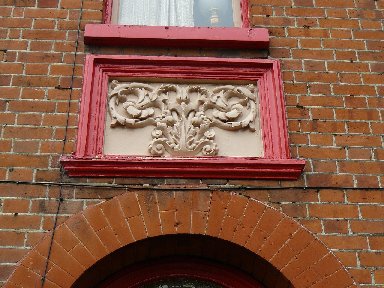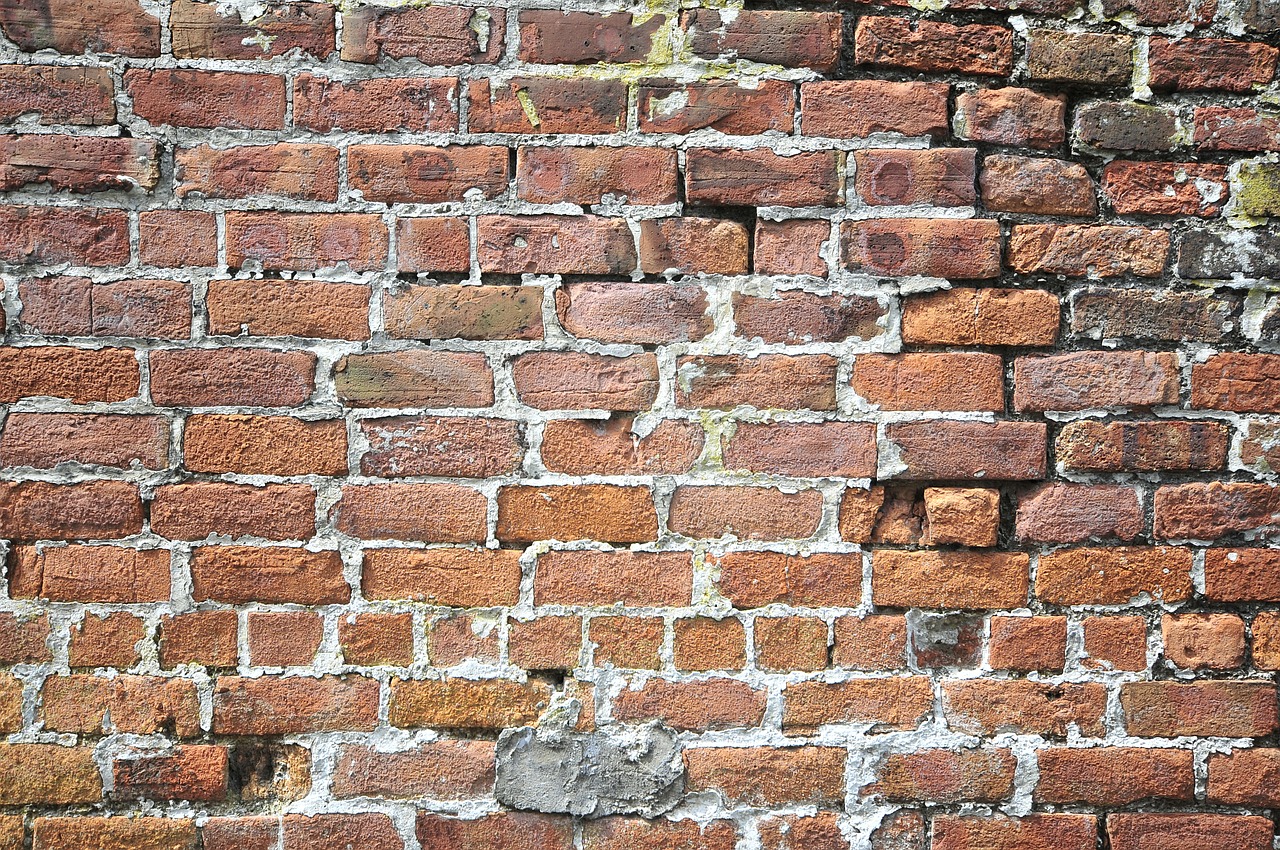The late 17th and early 18th centuries were a high point in the use of
brick. Their manufacture was much improved, with blended clay, better
moulding and more even firing which lead to greater consistency in shape and
size. The colours of bricks changed in popularity from red, purple or grey
bricks fashionable in the late 17th century until 1730, when brownish or
pinkish grey stocks replaced the hot colours. These were followed in the mid
18th century by grey stocks, and, by 1800, the production of yellow marl or
malm London stocks, which were closer to the stone colour desired for a
classical facade.
Brickwork was generally of a very high standard, in mainly Flemish bond
although header bond was also popular in the early 18th century. Pointing
was executed to a similar standard. As well as giving more protection to the
weaker bedding mortar, fine detailing also helped to minimise the visual
impact of the joints so that the classical details could be displayed more
clearly. 'Tuck' pointing was the ultimate development in this quest. A more
expensive solution was to use 'gauged' brickwork popularised by Wren using a
facade of fine, colour-matched bricks cut and rubbed to exact units, and
laid in thin lime putty joints. However after 1730 this was considered too
expensive and was reserved for window arches, aprons and other ornamentation
only.
 Victorian brickwork 1830-1914
Victorian brickwork 1830-1914
This was a period of revivalism in domestic architecture and industrial
building. The former seeking a return to 'medievalism' and other exotic
building forms as a relief from the unspirituality of the Machine Age. The
latter, for the infrastructure of factories, warehouses, railway bridges and
so on, all largely met through the cheap use of bricks. During this period,
a greater number of bricks were made and laid than during all the previous
periods. Brick manufacturing methods had improved in all respects including
quality accuracy, regularity and in range of colours available. From the mid
18th century onwards the manufacturing process, like many others, was
becoming mechanised. This enabled deeper clays to be used for pressing into
dense bricks for use on civil engineering works.
With improvements in travel and communications, bricks could be
transported over wide areas which removed the traditional local variations.
Improvements in the production of mortar also occurred during the late 18th
century through the use of washed and graded aggregates, often with
colouring. Also, the development of natural cements including Roman cement
and other hydraulic limes, which set quicker and stronger, were vital to the
speed of construction that the Industrial Age demanded. Portland Cement
appeared in the mid 19th century. Joints reduced to 0.3 inches (8mm) due to
the accuracy of the machine pressed bricks and continued to be finished in
various profiles. These were popular from the 17th century although the new
'weather-struck' and 'cut' style of joint became particularly popular. A
variety of face bonds were now used although, in the main, Flemish bond
predominated domestically, whilst English bond was favoured industrially. In
all matters of brickwork, the Victorian desire for enrichment was readily
achieved by the use of often garish polychromatic work, and the lavishing of
ornamentation by detailing mass produced purpose moulded 'specials' or by
gauged brickwork.
